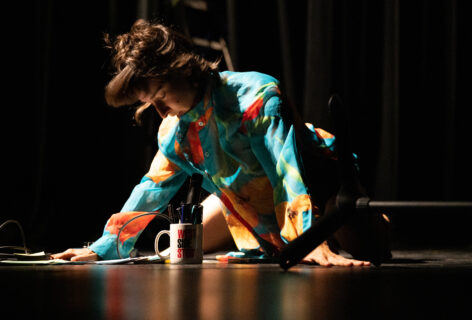In January 2019, Movement Research moved into the 122 Cultural Center at 150 First Avenue, our first long-term home dedicated and committed to supporting movement-based experimental artists. For 40 years MR was without its own home—rarely having both office and studio space in the same building, with dancers committedly criss-crossing lower Manhattan and beyond for classes & workshops, rehearsal space, performances, and events. This year, Movement Research is in the final phase of building and making a permanent home for experimental dancers in New York City at the 122CC.
To explore all locations, check out the Movement Research Map! Be sure to check back each week as we update this map with all of the spaces MR has been from 1978 to now!
1978-1983
We Are Building a New Home!


While we look forward to a new future for Movement Research within our first long term home, we are taking a dive into our history and remembering each space we’ve danced, gathered, worked, and held space in since our collective founding in 1978! Each week, we will look back at a different era of the organization. This week we kick off with MR’s first five years, 1978-1983!
In 1978, The School for Movement Research & Construction was founded by a collective of artists. Originating during a time when a number of artist-founded organizations are springing up in the U.S, MR provides its founders with informal environments for dialogue & dancing together, and it evolves into a structure that supports workshops in experimental movement investigations.
Periodic performance presentations began in 1979 and the first benefit performance in April 1979, featuring Trisha Brown, David Gordon, Valda Setterfield & Douglas Dunn, at 40 Irving Place was called “the concert of the decade” by press!
In 1980, the organization incorporated as a not for-profit organization and adopted the name it is now known by across the globe, “Movement Research, Inc”. With this incorporation, the organization established its first all artist Board of Directors: co-founders Wendell Beavers, Beth Goren, Richard Kerry, Daniel Lepkoff, Terence O’Reilly, Mary Overlie, Christina Svane & Board President Cynthia Hedstrom.
The first year of the critically acclaimed Studies Project, held at Danspace Project in St. Mark’s Church and the Triplex Theater, began in 1982. Throughout the 1980s, participants include such artists as Mark Morris, Senta Driver, Molissa Fenley, Bill T. Jones, Steve Paxton, Spalding Gray, Eric Bogosian, Bill Irwin, David Gordon, Rachel Rosenthal, Blondell Cummings, Ethyl Eichelberger, David Cale, Pooh Kaye, Robert Whitman, Kei Takei, Joan Jonas, Dana Reitz, Kenneth King, Jim Self, Ishmael Houston-Jones, Remy Charlip, Meredith Monk & such moderators as Paul Langland, William Harris, Sally Banes, Simone Forti, Mary Overlie & Stephanie Skura. Of the Studies Project, Elizabeth Zimmer writes, “…one of the most illuminating discussions I’ve ever been privileged to witness…You should have been there…”
1983 marks the first year of Open Performance, a monthly series for artists & students to present works-in-progress to small audiences followed by open discussion of the work by audience & artists, originally held in studios at Ethnic Folk Arts at 179 Varick Street and Simone Forti’s Studio at 537 Broadway, now WeisAcres.
Throughout these first five years, there is no Movement Research office, with the organization being run out of the backpacks of the Board of Directors across various studios across lower Manhattan where classes & workshops took place, such as KIVA at 307/309 Canal Street, Dance Theater Workshop (DTW) at 219 W 19th Street, and Performance Space 122 at 150 1st Avenue.

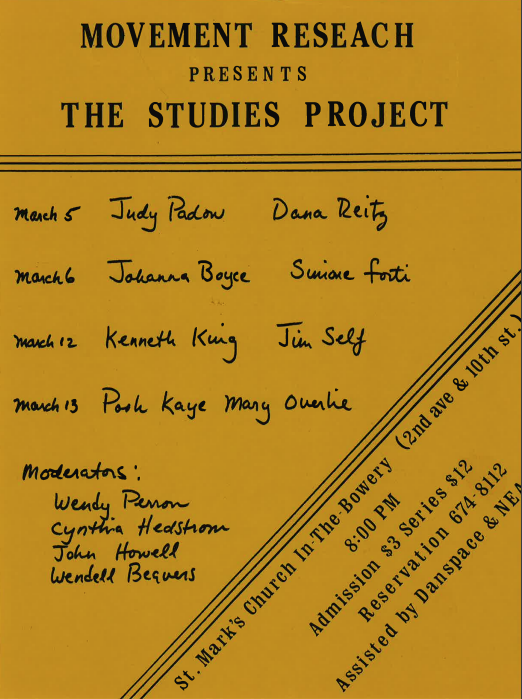

1984-1992


1984 was a big year for the organization as MR moved into Ethnic Folk Arts Center at 179 Varick Street, strengthening MR’s capacity to deliver programs through affiliation with another organization. Additionally, MR receives a Special Citation “Bessie” Award for the Studies Project for enlightening inquiries and arguments on the how and why of dance, presented by Simone Forti, and the Presenting Series, a precursor to Movement Research at the Judson Church series, is initiated! In 1986 the Studies Project moved to The Triplex after first taking place at St. Mark’s Church and Ethnic Folk Arts Center.


In 1988 the Artist-in-Residence Program was launched, with DANCENOISE, Lauri Nagel, Lisa Nelson, and Susan Rethorst as the first MR AIRs. Within the next five years, the program will evolve to include commissioning funds, residency fees, work-in-process showings on the MR@Judson series, co-production at other spaces, class & workshop opportunities, subsidized and free rehearsal space, and career development support.
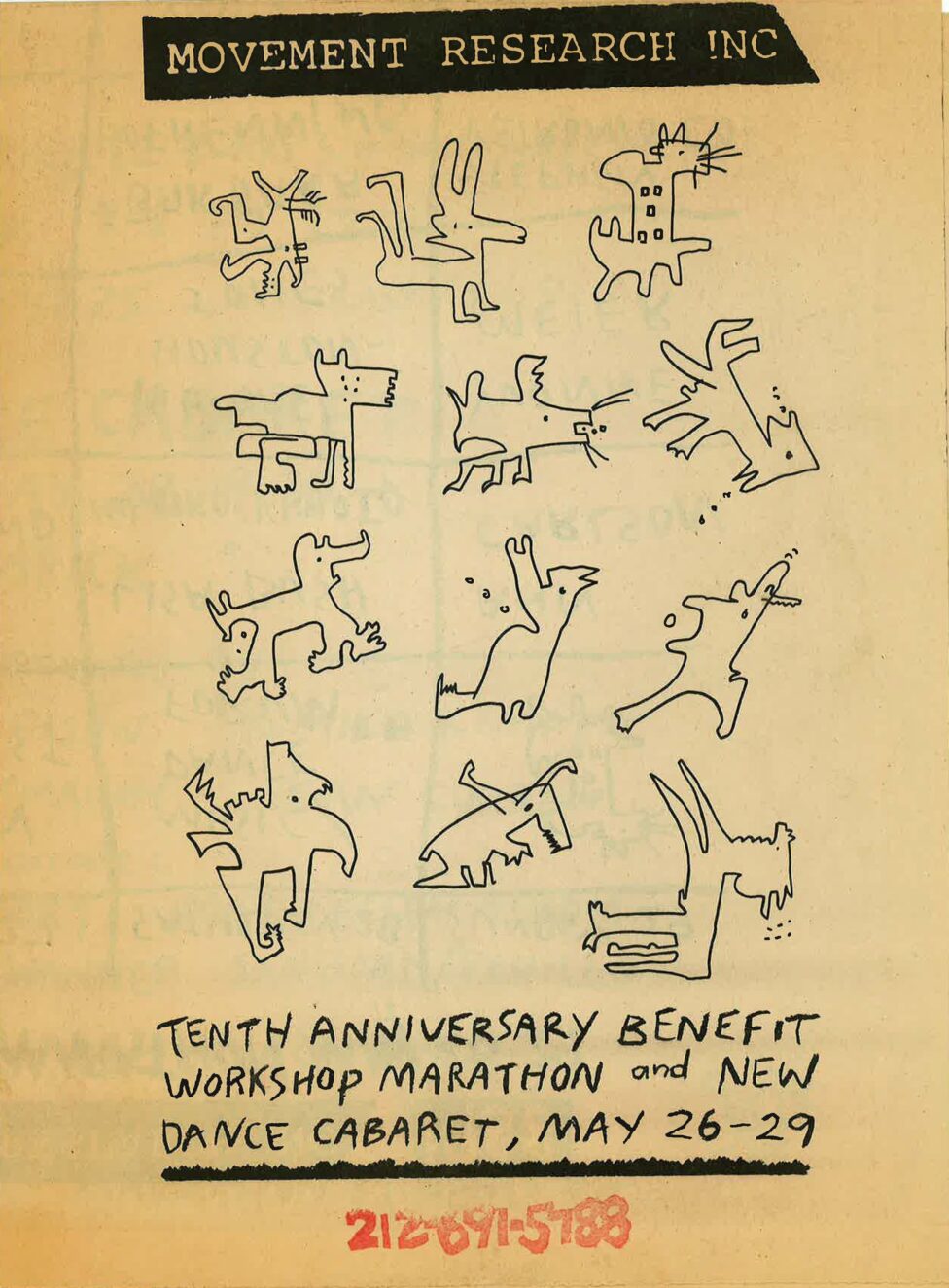


The first issue of the Performance Journal was published in 1990! Editor Richard Elovich and Associate Editor Michael Sexton write, With this first issue of Movement Research, we open a new public space for the New York performance community: a textual space in which artists can develop a critical relationship to the work being produced around us…Recognizing a real lack of opportunity for choreographers, dancers, writers, musicians, and performers to engage in each others’ work analytically, we have created Movement Research as a slightly anarchic forum in which opposing ideas and aesthetics can be seriously developed and debated…In a time when the arts and artists are seriously under attack, a dialogue among artists develops both the rigorous introspection and the larger commitment of a community, creating a vision necessary for survival.

In 1991 Richard Elovich resigned as Executive Director and Cathy Edwards and Guy Yarden were hired as Co-Directors. During their tenure, Edwards and Yarden continue momentum built under Elovich and work to expand on the critical role of the artist community in shaping programs. The office at Ethnic Folk Arts serves as meeting grounds for long conversations among artists about aesthetics, performances and classes, and a strong emphasis on inclusive programming begins to take shape, including the start of Movement Research at the Judson Church series, curated by Cathy Edwards and Guy Yarden, with subsequent years curated by selection panels. In the same year the workshop series expanded to include daily classes in the mornings and workshops that reach out beyond the artist community, including a new program for people living with AIDS.


In 1992 the Improvisation Festival/New York launched, initiated by Sondra Loring (MR artist-in-residence) and Julie Carr, with MR cooperation. Over the years, the IF/NY Festival draws artists working in a range of approaches to improvisation from throughout the U.S. and internationally (Spain, Ireland, Germany, Italy, Australia, Canada, Netherlands and France). The two-week long IF/NY festival provided a stable structure for the exchange of ideas, and a meeting point for artists working with improvisation, teaching and performing, and was the precursor to the Movement Research Festival.
That same year, one of NYC’s most beautiful studios is lost as MR is evicted from Ethnic Folk Arts Center, and the space is leased to a nightclub. On a tip from Bebe Miller, MR collaborates with Context Studios on Avenue A to establish an office and two studios, aiming to create a ‘home’ for artists.
To see all locations we’ve gathered in, check out the Movement Research Map! Be sure to check back each week as we update this map with all of the spaces MR has been from 1978 to now!
1993-2001

In the years 1993 and 1994, Movement Research formalized a work-study program, developed Dance Makers in the Schools, and launched Move to Heal – a free series of classes for people dealing with health struggles such as AIDS and HIV and for their partners and care-givers. The MRX/the Movement Research Exchange also began! In the early years of MRX, national partners include Painted Bride, Philadelphia, PA; Diverse Works, Houston, TX; Dance Umbrella, Austin, TX; & The Wagon Train Project in Lincoln, NE, and international partners include Dans Centrum, Stockholm, Sweden; Certamen Coreográfico, Madrid, Spain; Japan Society, New York, NY; Japanese Contemporary Dance Network, Kyoto, Japan; and Centro Nacional de las Artes, Mexico. Finally, a Town Hall Meeting on June 14, 1994 provided a catalyst for discussion on authority, diversity and community in the context of the arts, with the discussion focusing on the role MR has in defining cultural exchanges, growing out of divergent opinions on the issue of cultural imperialism as manifested through international MRX exchanges.

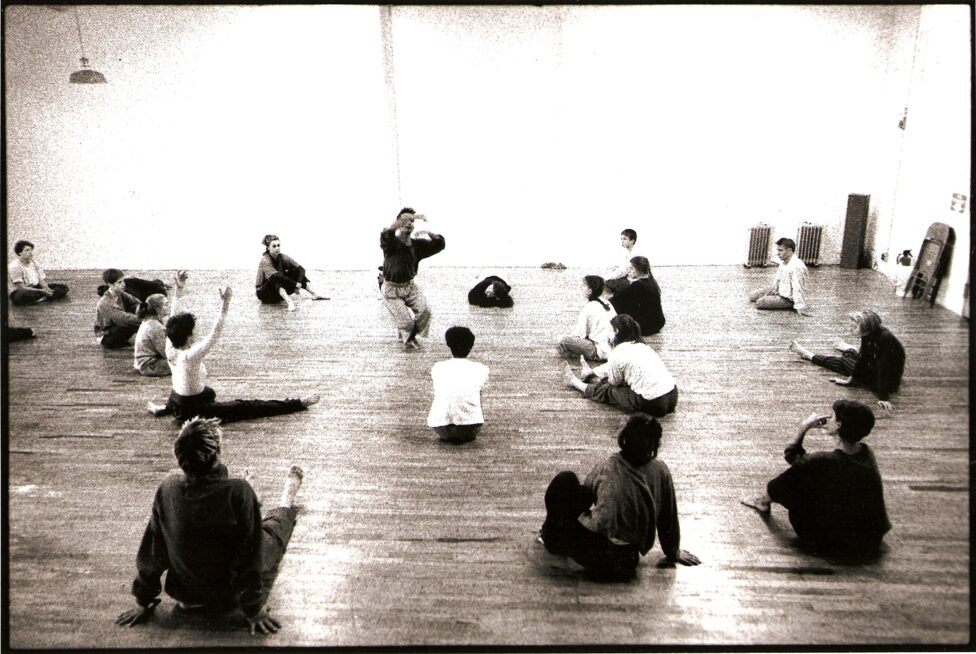
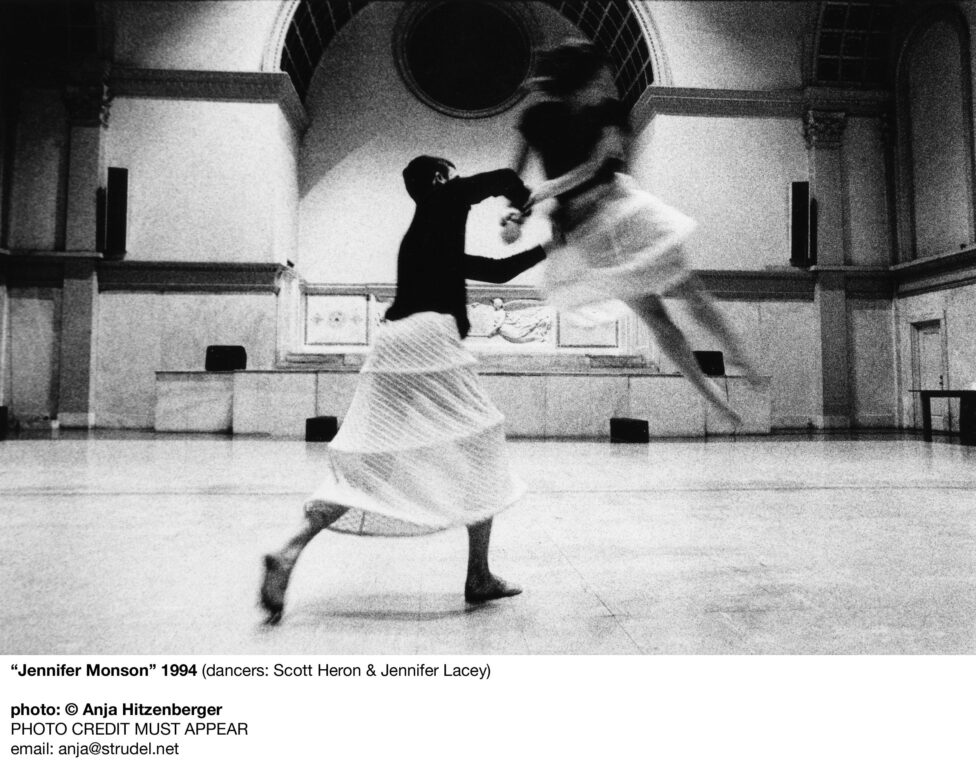

1995 is a year marked by a great openness under the new Acting Director Audrey Kindred, with the organization working creatively with artists and by an intellectual engagement with pressing aesthetic, political and social issues, and organizing dynamic panels around contemporary issues including those of diversity and cultural difference.

In 1997 with the closure of Context Studios on Avenue A, the MR office moved to Elizabeth Street. With this move, the MR office and studios are no longer housed in the same location for the first time since 1984, a circumstance that would be ongoing for the organization until 2019! Movement Research began holding classes, workshops and events in several spaces in lower Manhattan including Bill Young Studio, Battery Dance, The Knitting Factory, Cooper Union, Washington Square United Methodist Church, Soundance Studio, and Jack Tilton Gallery. MR also expanded it’s partnership with Judson Memorial Church, holding Studies Projects and Open Performances in the Judson Garden and Gym at this time.

1998 marks the first MELT Summer Intensive offering four weeks of workshops at Danspace Project at St. Mark’s Church and Eden’s Expressway!

The Improvisation Festival / New York began to be curated by Amanda Loulaki in 1999, continuing a vital festival approach that includes U.S.-based and international improvisers who perform, teach and exchange ideas.
In 2000, MR expanded to new partnerships for classes, workshops and events at the Chinese Cultural Center, Broome Corner Studio, the Greenspan Center, and the Sandra Cameron Dance Center.

In 2001 Movement Research took on the annual lease of Eden’s Expressway, owned by Frances Alenikoff, and the MR office moved into 648 Broadway (between Bleeker and Bond Sts), after moving six times from 1997-2001.
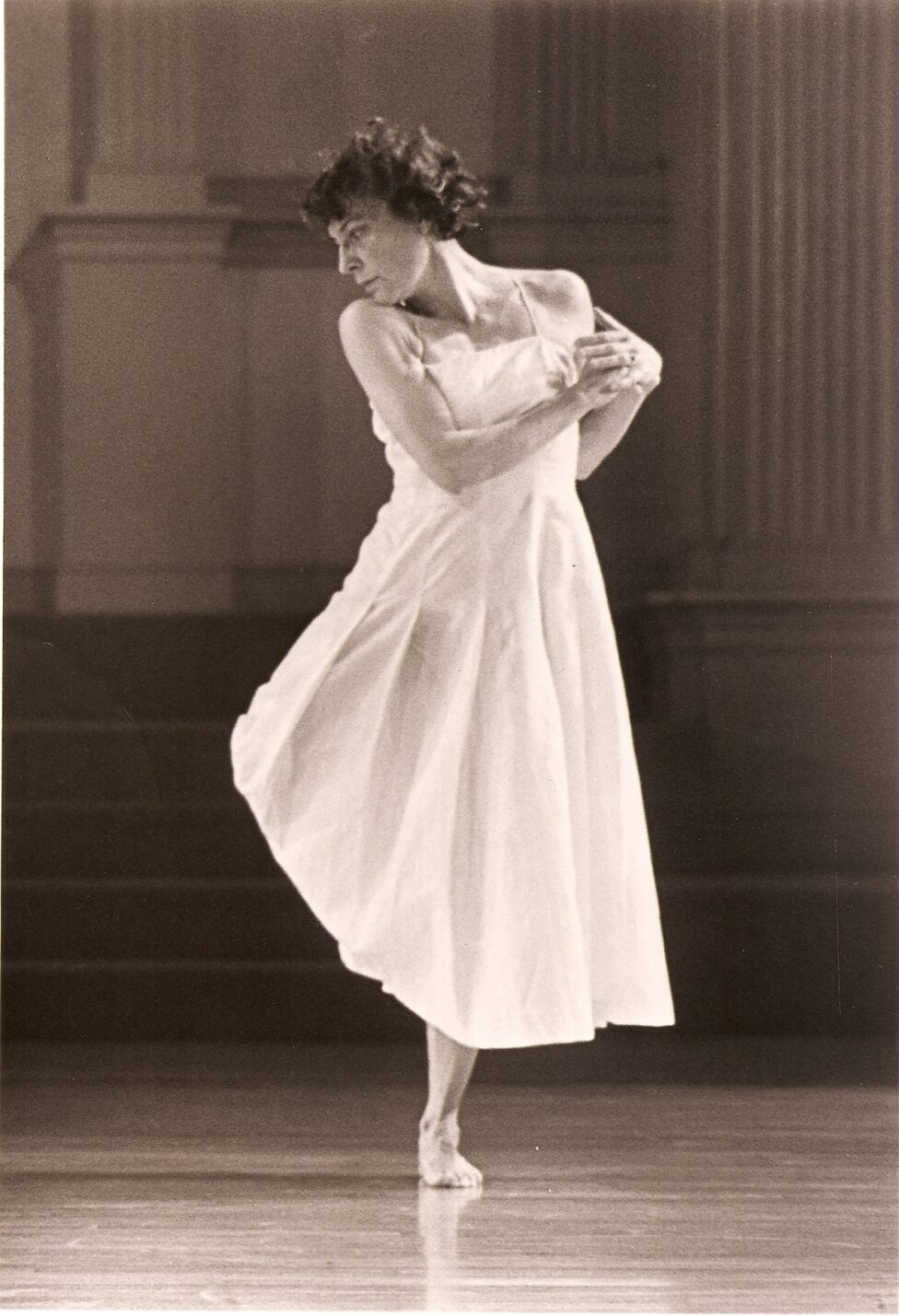
2002-2010

In 2002, the first MELT Winter Intensive was held for one week. Over the years, Winter MELT has expanded to offer workshops for 3 weeks!



2004 is the 25th Anniversary of Movement Research! Mary Overlie, one of Movement Research’s founding artists, writes in the 25th Anniversary Celebration issue of Performance Journal (Issue #27/28): I am awed but not surprised that Movement Research has managed to make it to its twenty-fifth birthday. Awed because Movement Research is a maverick in the field of organizations and therefore difficult to find funding for, requiring by the nature of its objectives great donations of time and energy on the part of the dance community. Not surprised because Movement Research represents a small but necessary voice in support of a new perspective in art, philosophy, science and politics…Because Movement Research is designed to serve a community of artists who believe in non-exclusive art, particularizing the study of the body, non-hierarchical structures in choreography and the connection of movement to the earth, it has an implicit reason to survive.
The 25th Anniversary Celebration GALA Benefit “MR@25” honors longtime supporter Micki Wesson and MR’s founders with performances by Meredith Monk, Yvonne Rainer, Steve Paxton, Julie Atlas Muz, and Ann Liv Young, with Jennifer Miller of Circus Amok as the emcee. The Movement Research Festival is launched, having evolved from the New York Improvisation Festival. Improvisation is Hard, is the first MR Festival to implement a curatorial team structure with Jonah Bokaer, DD Dorvillier, Miguel Gutierrez, K.J. Holmes, Ishmael Houston-Jones, Isabel Lewis and Yvonne Meier. Over 150 artists participate in performances and discussions in 11 venues!
This same year, the MR office moved to Dance Theater Workshop and both the Movement Research at the Judson Church and Open Performance series take place at Dance Theater Workshop while Judson Church is under renovation.
An Artist Town Hall Meeting took place on February 2 with the purpose of engaging in peer discussion on MR, its programs, short and longer-term strategies for survival and viability in advancing its mission in the current ecology. Additionally, three Faculty Town Hall Meetings were held June 27 and October 16-17 with the purpose of creating a dialogic space for discussing emerging dance and movement-based forms and teaching methodologies, and to foster a sense of community among teaching artists while enabling community feedback to inform MR’s future.
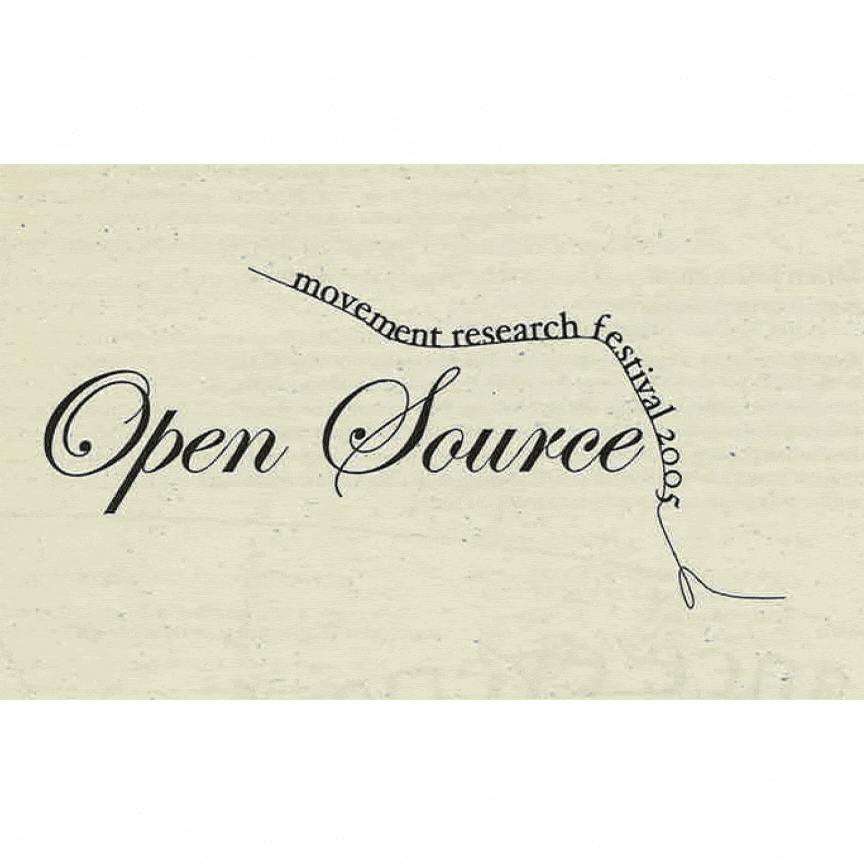
In 2005, the Movement Research Performance Journal launches an Editorial Team structure with the publication of Performance Journal #29, Improvisation is Dead; Long Live Improvisation. The first Editorial Team consists of April Biggs, Kimberly Brandt, Levi Gonzàlez, Isabel Lewis, Alejandra Martorell and intern Layard Thompson. The Movement Research Festival 2005: Open Source expands to three weeks featuring over 300 artists in 11 venues throughout the boroughs. Curatorial Team members DD Dorvillier, Margit Galanter, koosil-ja and Michelle Nagai bring together nationally and internationally acclaimed improvisers in a Festival that critiques presentational aspects of performance and festival formats, and offers alternative and emergent practices.
In 2006, Movement Research continued to rely on individuals in its Work-study & Intern Program, who learn and contribute skills in not-for-profit management in exchange for access to classes & workshops. In this year, 26 work-studies and interns keep classes, workshops and MELT intensives running smoothly and provide critical support in office management, marketing/publicity, development, operations, archives and special events.
The same year, Critical Correspondence was launched on MR’s website, spearheaded by editors Alejandra Martorell and Guy Yarden! The Movement Research at the Judson Church series returns to Judson Memorial Church – which has undergone renovations and now has a sprung wood dance floor – with a celebratory Opening Night event featuring performances by Deborah Hay and Juliette Mapp, and a send-off party for Carla Peterson, who departs her role as Executive Director. Barbara Bryan is hired as the new Executive Director!

2007 marks the first Spring Festival, making Movement Research Festival a biannual event, and the organization launched its first Summer Internship Program, designed to provide college credit and experience in non-profit administration to talented students. Finally, in 2010 Anna Halprin conducted a historic workshop that attracts over 50 dancers!



2011-2018

Movement Research is in the final stages of building out our home for experimental dance artists in the 122 Cultural Center in NYC’s East Village! Finishing touches on the spaces are underway, we can not wait to welcome you into the completed spaces later this Spring!
While we look toward our future within our first long term home and prepare for the official Ribbon Cutting, we are taking a dive into our history remembering each space we’ve danced, gathered, worked in since our collective founding in 1978!
This week features Movement Research from 2011 to 2018 – the final few years before we find our home in the 122 Cultural Center!


In 2011, Movement Research celebrated the 20th Anniversary of the MR Festival with the theme “DEVOTION/RIGOR/
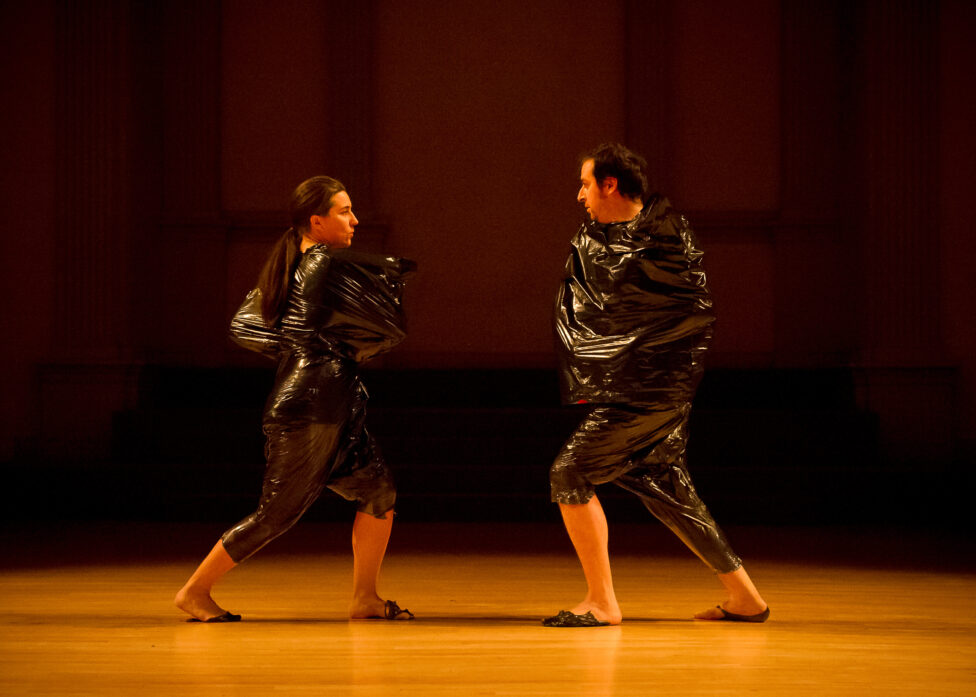
MR continued to operate Eden’s Expressway and uphold the legacy of Eden’s founder Frances Alenikoff who passed away at the age of 91 in 2012. Also this year, Movement Research celebrated the 50th Anniversary of Judson Dance Theater with JUDSON@50, a series of workshops, discursive events, film showings, and a residency at the New Museum.

In Fall 2013, MR launched Sunday Process Labs, a series of three-hour, low-cost sessions on Sunday evenings, providing an opportunity for a dynamic exchange amongst peers in a lab-type setting. This inaugural season included 8 labs hosted by Marjani Forté, Melinda Ring, Anna Sperber, Antonia Baehr, niv Acosta, Elena Demyanenko, Tatyana Tenenbaum, Melanie Maar, who shared their individual creative practices and process with participants.
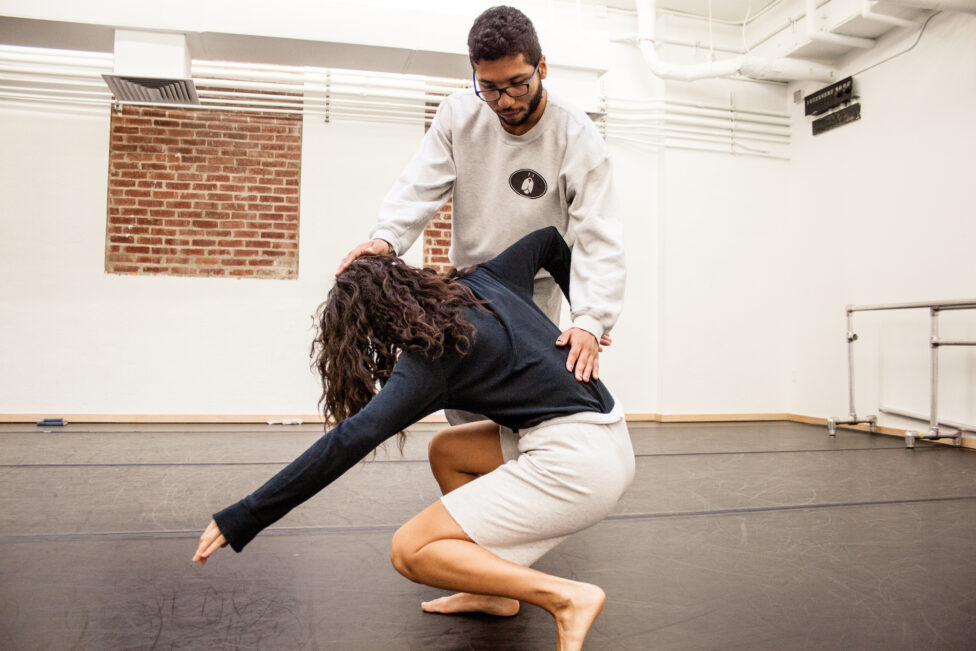
In 2014, Movement Research became a founding partner at Gibney Dance Center’s new Chamber Street location and launched the Somatic Practice & Physical Inquiry class series, which is still running today! This series of ongoing, weekly drop-in classes is based on a variety of body practices and is designed to expand one’s understanding and use of the body, with classes suitable for professional dancers and non-dancers alike.
Movement Research moved into Studio G05 at Abrons Arts Center in 2016! Also in this year, the organization launched its first Van Lier Emerging Artist of Color Fellowship. Still an active program today, the fellowship provides year-long creative research support, rehearsal space, mentorship, performance and related opportunities designed to support the individualized creative process of movement-based artists.

In 2017, Movement Research marked 25 Years of Movement Research at the Judson Church and 50 Issues of the Movement Research Performance Journal with a special celebration at our 2017 Spring Gala! This year also marked the second to final move for Movement Research, as the main office moved to 140 Second Ave, Suite 502.
…and in 2018 we celebrated Movement Research’s 40th Anniversary Season!
2019-2024
Movement Research is in the final stages of building out our home for experimental dance artists in the 122 Cultural Center in NYC’s East Village! Finishing touches on the spaces are underway, we are thrilled to welcome you into the completed spaces this Spring!
While we look toward our future within our first long term home and prepare for the official Ribbon Cutting, we are taking a dive into our history remembering each space we’ve danced, gathered, worked in since our collective founding in 1978!
This week features Movement Research from 2019 to 2024 – the first five years at 122CC!
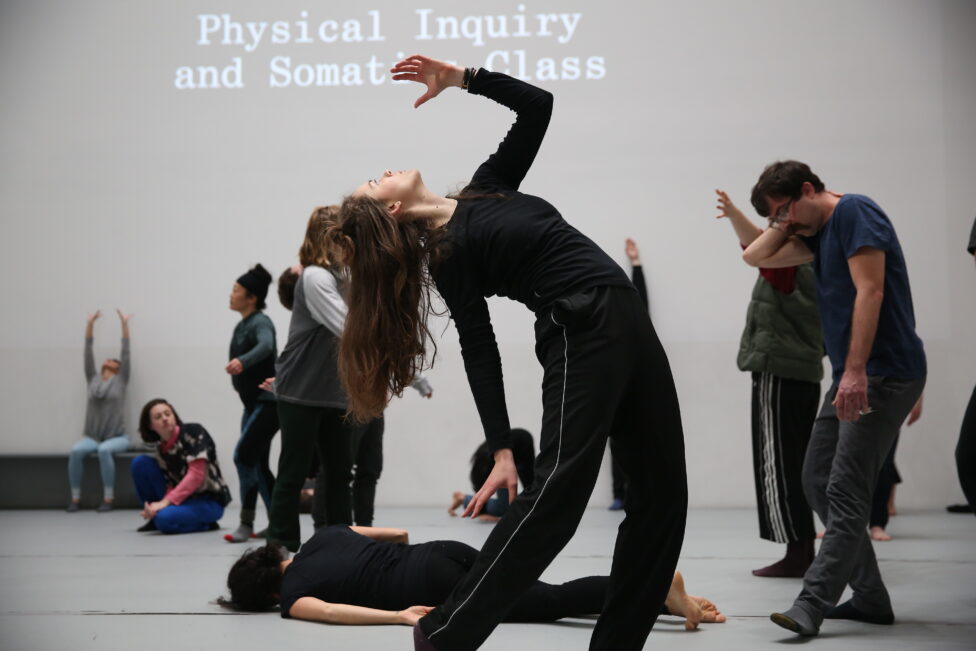

2019 marks the first year of Movement Research at its new home in the 122 Cultural Center! The organization moved its office into the second floor, and began to hold programs and offer subsidized rehearsal space in two raw spaces on the first floor outfitted with a floating, sprung dance floor and access ramps to make the spaces usable for our artists while plans for a full build out of the spaces were underway.
Also in this year, Movement Research was hosted by MoMA in its Marron Atrium for the final weeks of the museum’s exhibit, Judson Dance Theater: The Work is Never Done. MR transformed the atrium into a space for the creative process and education through Classes & Workshops, MR Performance Journal reading groups, and Studies Projects.

In March 2020, after just over a year of operating in the 122 Cultural Center, MR’s first long-term home in its then 40-year history, MR’s facilities temporarily closed due to the covid pandemic. MR’s staff quickly rallied to move much of our robust programming to an online/virtual format including Classes & Workshops, Dance Makers in the Schools, Open Performance, Artist-in-Residence meetings.


At the same time, as a part of MR’s newly launched Accessibility Initiative, the organization engaged an Accessibility Consultant and established MR’s Accessibility Advisory Team to develop a strategy to make access an ongoing priority and process that grows and develops along with disability culture both within the organization and our field.

Movement Research continued to navigate the circumstances around the pandemic in 2021 and 2022 as we re-opened in-person public programming! During this period, where in-person gatherings were still sparse, MR remained committed to offering free and sliding scale daily online programming so that our community could continue to move together regardless of health and safety variables, including over 550 virtual classes & workshops!


The Access. Movement. Play. Residency launched in 2023! MR’s fully ADA compliant studios at 122CC allowed us to house this first of its kind, national residency program, designed by and for multi-marginalized disabled dance artists. The A.M.P. Residency was designed by Kayla Hamilton and a Disability Dance Working Group which includes Joselia Rebekah Hughes, Elisabeth Motley, India Harville and Petra Kuppers.

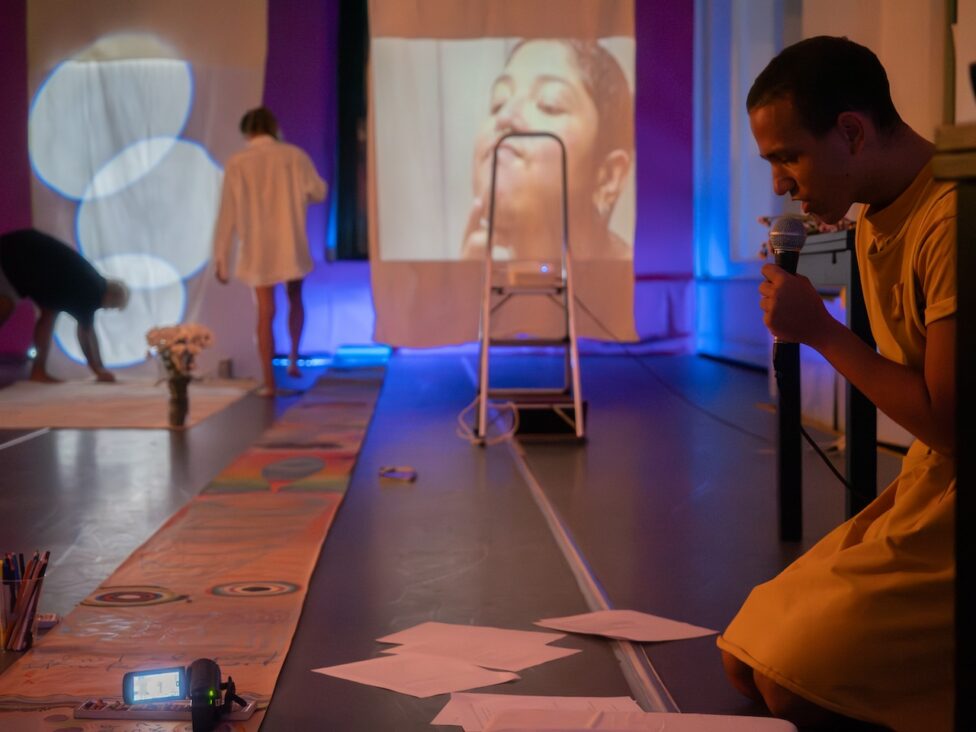
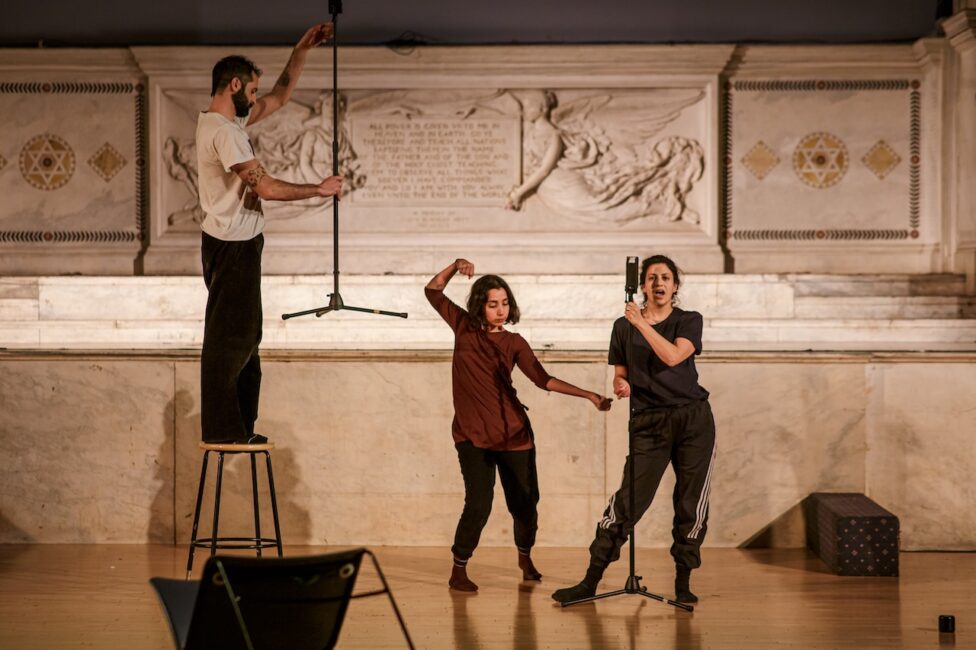

In 2024, the Movement Research Festival returned for the first time in almost 5 years. “Practices of Embodied Solidarity in Movement(s)”, curated by Marýa Wethers, focused on the artists and partnerships developed through the GPS MENA (Middle East & North Africa) Exchange program.


Finally, in this same year, Movement Research officially broke ground on the build out of our studios and auxiliary spaces at the 122CC, bringing a project years in the making to its final stages!

2025 on!
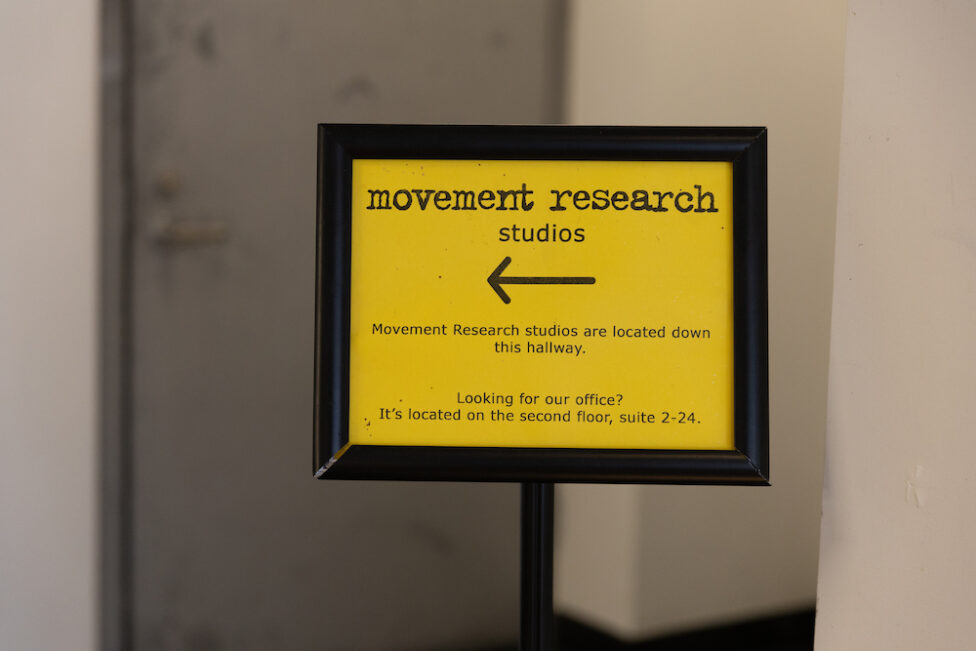
We’ve spent the last few months delving into our history, remembering each space we’ve danced, gathered, worked in since our collective founding in 1978! Last week we celebrated the Ribbon Cutting of our newly built out spaces, decorated in the legacy of artists that have bolstered and shaped our experimental dance community to now.

This week we highlight each of Movement Research’s newly built out spaces, named in honor of a few of those who have laid the groundwork for an extraordinary future within our first long term home!
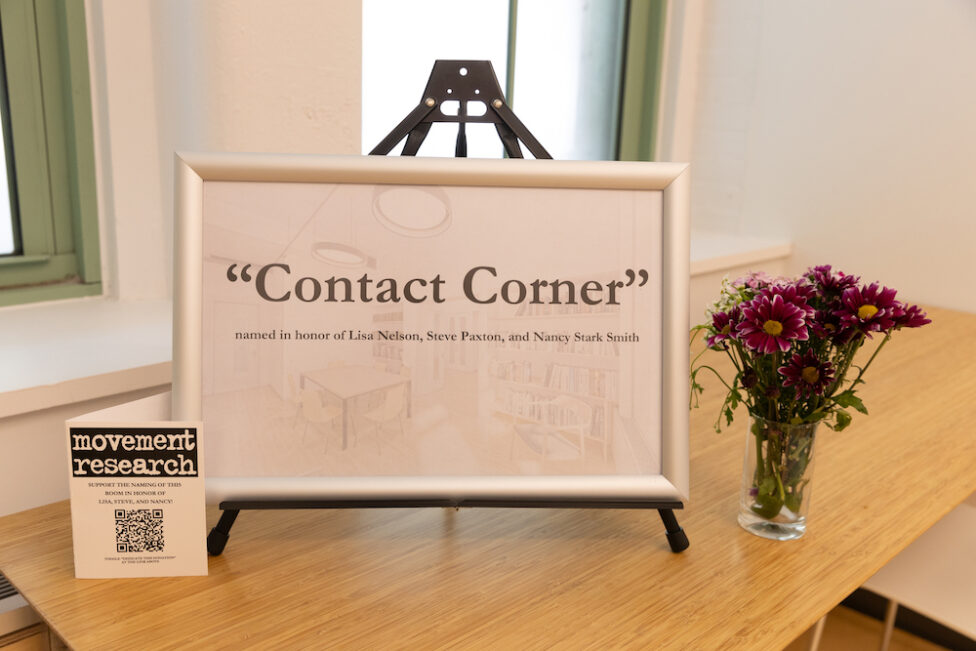
“CONTACT CORNER”, named in honor of Lisa Nelson, Steve Paxton, and Nancy Stark Smith, a new resource room adjacent to our studios, holds MR’s library and serves as a long-awaited research, gathering and resting space for artists.

Lisa, Steve, and Nancy, each luminaries of the improvisational dance community within their own artistry, and interconnected throughout their lives through collaborative efforts including the development of Contact Improvisation and Contact Quarterly (CQ).
“CONTACT CORNER” will host a full collection of CQ journals – the longest living, independent, artist-made, non-profit, reader-supported magazine devoted to the dancer’s voice.


A studio (formerly referred to as the Courtyard Studio) will be named in honor of Ishmael Houston-Jones, our beloved, long term MR board member and extraordinary artist. Ishmael’s work and research has inspired us all and has lived and thrived in the 122CC building and the East Village neighborhood since 1979. As a choreographer, author, performer, teacher, and curator, his improvised dance and text work has been performed world-wide.

“THE BOB” (formerly referred to as the Ninth Street Studio), is named in honor of Robert Rauschenberg, through support by The Robert Rauschenberg Foundation. Rauschenberg’s art has always been one of thoughtful inclusion. Working in a wide range of subjects, styles, materials, and techniques, Rauschenberg has been called a forerunner of essentially every postwar movement since Abstract Expressionism. His lifelong commitment to collaboration—with performers, printmakers, engineers, writers, artists, and artisans from around the world—is a further manifestation of his expansive artistic philosophy.

To enlarge the map and view all pinned locations click on the icon to on the upper right hand side!
In 2024, we launched the final phase of our Capital Campaign to raise $200k to support the build-out of our first long-term home at the 122CC. With the generous support of our community, we only have $22k left to raise! Help us reach our goal and donate in support of naming these spaces by toggling the “Dedicate this Donation” at the the link below!



